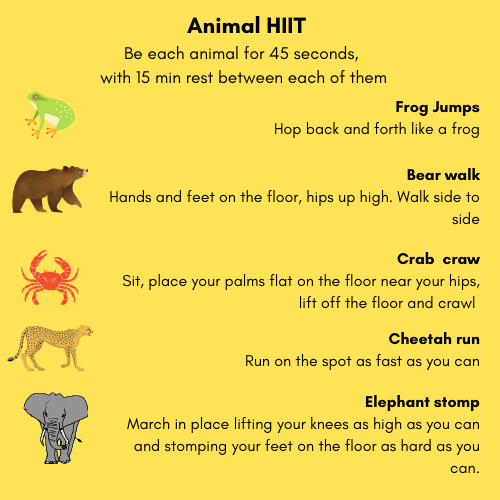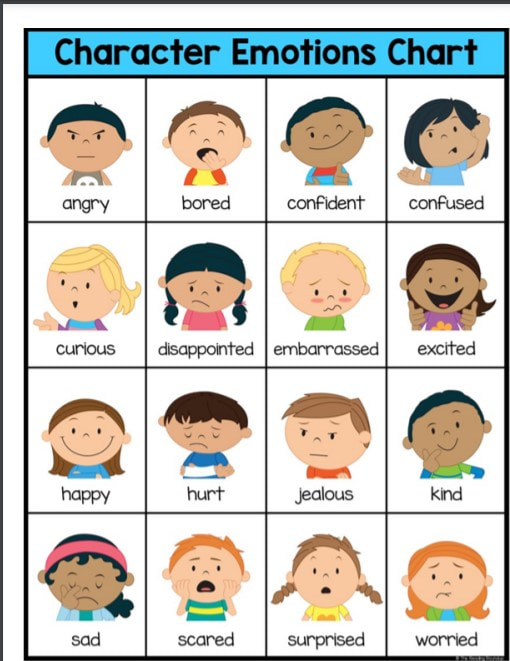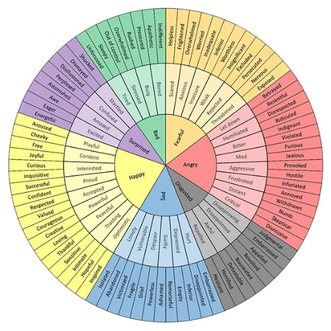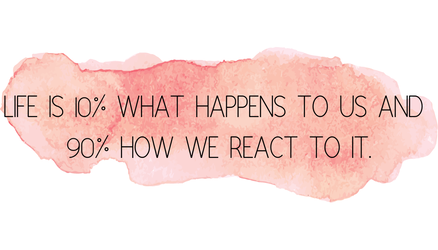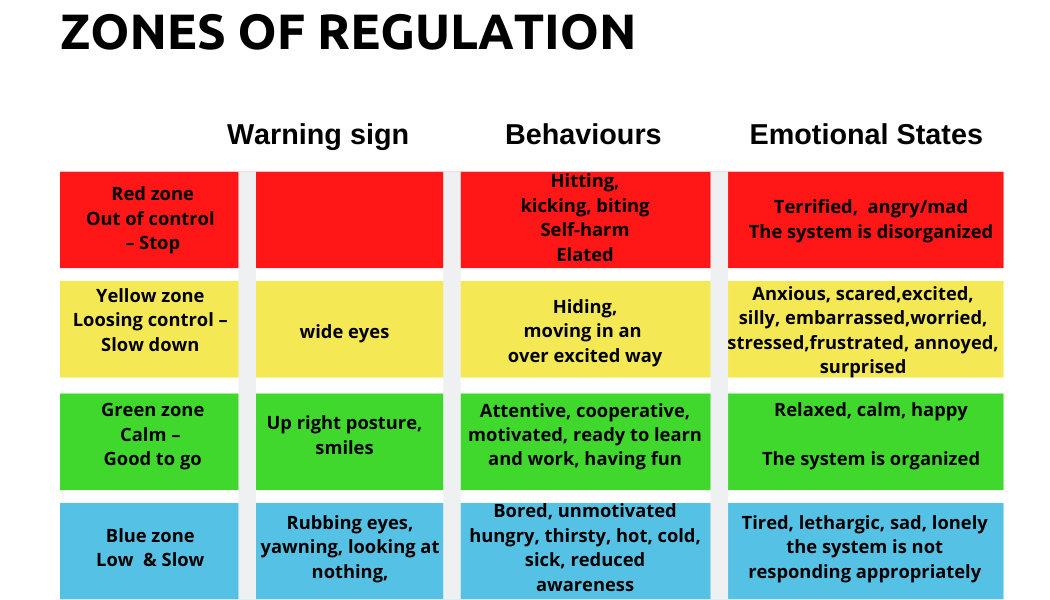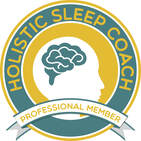Welcome to Henry's
|
|
Booking call - 10th March 2022
|
|
|
|
Quick wins. You can print it by clicking on each picture.
|
|
|
|
Physical exercise ideas
Encourage a lot of exercise and challenging physical activities.
|
Love cup activities ideas
If when playing rough there is an injury (physical or emotional), take a pause, acknowledge the hurt, ask if they want to carry on or if they should leave for another day. Their feelings are more important than the game! It can also be helpful to have organised pauses to lower the energy levels from time to time. |
|
Essential oil blend for bedtime calm
Here is a lovely blend you can use in the bath or as a spray on the lead up to bedtime. 4 drops lavender 2 drops vertiver 1 drop clary sage 1 drop lemon |
Week 1 1/2
|
|
Nap
You will need to find a rough balance in terms of timing and duration of nap depending on what is happening on your day, what bedtime you can do that evening and what Henry needs. In general, try to leave Henry awake for 7(ish) hours before bedtime. If this is not possible you could encourage lots of physical activities in the afternoon so Henry is tired enough in the evening. If he is napping on the way from nursery or later into the afternoon you can do 2 things: either cut the nap short so there is nearly 7 hours before bed or make bedtime later that night. Bedtime fading Bedtime Fading is the procedure of putting your child to bed at a much later time then you might think reasonable and after a while, gradually bringing the bedtime to an earlier time. The Bedtime Fading technique does not teach sleep skills on its own, it just strengthens the association between the bedtime expectations at a time that Henry is really tired and super ready to sleep (it takes advantage of increased felt sleep pressure). Sleep pressure is one of many factors that influence sleep. When sleep pressure is increased, children are more exhausted and more likely to fall asleep faster. Using this later bedtime strategy can give you faster results in the short term, by making it easier for your child to fall asleep a new way, due to feeling more tired. Step by step
Once Henry learns to associate the pleasant bedtime routine with falling asleep and he falls asleep within 20 minutes in bed, bedtime can be gradually shifted earlier. Around 15 minutes earlier each each 3 nights. Sharing a social story book with Henry at bedtime routine and during the day is a great way to reinforce the message of where he sleeps in a loving and fun way. Social story book - Henry's bedtime A social story is a personalized bedtime book showing step by step what happens between the start of the bedtime routine, a kiss goodnight, and ending with super happy Henry waking up in the morning. The idea is to communicate what happens, step-by-step. You can read it during the day and/or just before starting your bedtime routine. Here is a link where you can have one done but you can also print some pictures showing Henry doing each step, including being asleep in the bed, and staple together. https://mind-matter.com/ We will work further on the steps of the bedtime routine in later weeks, if needed. For now the main message we want Henry to get is -- where he has time with mummy and falls asleep, and that is on the floor bed and not the chair. Here is a suggestions of pictures to start with
The next steps would be
|
Week 2
Observing, understanding and regulating emotions Feeling all emotions, from negative to positive is normal and enriches our lives. But it is important that we feel emotions that are appropriate for the situation. Therefore, it is important to be able to regulate our emotions. As children grow they learn to regulate their emotions so it is appropriate for the situation. eg. It is ok to be super excited, pumped and fidgety when playing in the park but not ok to be like this when going to sleep or at a restaurant. Children who are able to regulate their emotions are more emotionally stable, more resilient, achieve more academically, and have fewer behavioural problems. Of course we can’t expect young children to be good at this, in fact even adults find it challenging to regulate emotions when they are under stress, hungry or tired. But we can all strive to develop tools to help us during tricky times in life. At first, our babies rely on us to regulate their emotions. We do this by: 1. Being with them and being regulated ourselves, and also by rocking, shushing, breastfeeding. So we are using all of the baby’s senses in order to balance their system. 2. Then baby accepts our tools and help. Meaning that they relax when we do these things. And as they grow, they know they can seek these actions and sensations we offer. 3. Eventually they learn ways to regulate themselves. So as children grow and develop, they learn strategies to regulate their emotions themselves, but with the safety net of having their parents nearby if needed. The stage of learning the skills and strategies for regulating emotions is very important and is a long and important process that can be done with kindness and warmth. |
|
Task 1 Name emotions. Help your child identify and name emotions
If your child is very upset, wait for them to be regulated and then talk about the emotions. Be careful to avoid judging and criticising the emotion. The objective is to identify the emotions and not to place value on them. |
|
An important step is to find good solutions for when we are becoming dysregulated.
If we are able to recognize when we are becoming less regulated, we are able to do something about it to manage our feelings and get ourselves to a healthy place. ‘Zones of regulation’ is a tool to help parents identify when a child may need support or guidance to regulating their emotions. Understanding the zones of regulation is also helpful for children to identify big feelings and develop skills to help regulate their own emotions during the day, when they are old enough. Throughout our day we fluctuate through all zones. What is important is to be able to regulate ourselves so to go back to the Green zone, where our parasympathetic system is active and we feel relaxed, calm as well as ready to learn and socialise. Once we identify in which zone ourselves or our child are, we can use regulating strategies to return or remain in the green zone.
Task 2 Explore when your child is on the different zones, what triggers them to go there and what helps them to return (or maintain) to the green zone and feel calm. When trying strategies to return to the green zone, explore what works for your child and keep an open mind. Also consider:
|
|
Regulating strategies
Here are some ideas of strategies, please add on to this if you find other things that work for your child. Strategies can provide the sensory input the child needs to maintain a calm, alert and organised state or use posture, flexion and breath to organise the body and re-set the nervous system The following strategies provide the sensory input children need to maintain a calm, alert and organised state. Tactile system:
Propioceptive system:
These activities are not to do too near bed time. If your child needs this kind of calming activities at bedtime, try balancing lying down, tummy down, on a gym ball on the trampoline. The idea is so your child is in curled up postures, and not extended positions. These postures are more calming and encourage deeper out breaths. Auditory system:
Vestibular system:
The follow strategies support regulation and help re-setting the nervous system Physical and sensory strategies:
Use of self and communication strategies:
Environmental strategies:
Calming strategies:
|
|
We will agree on our next zoom call next week. |


